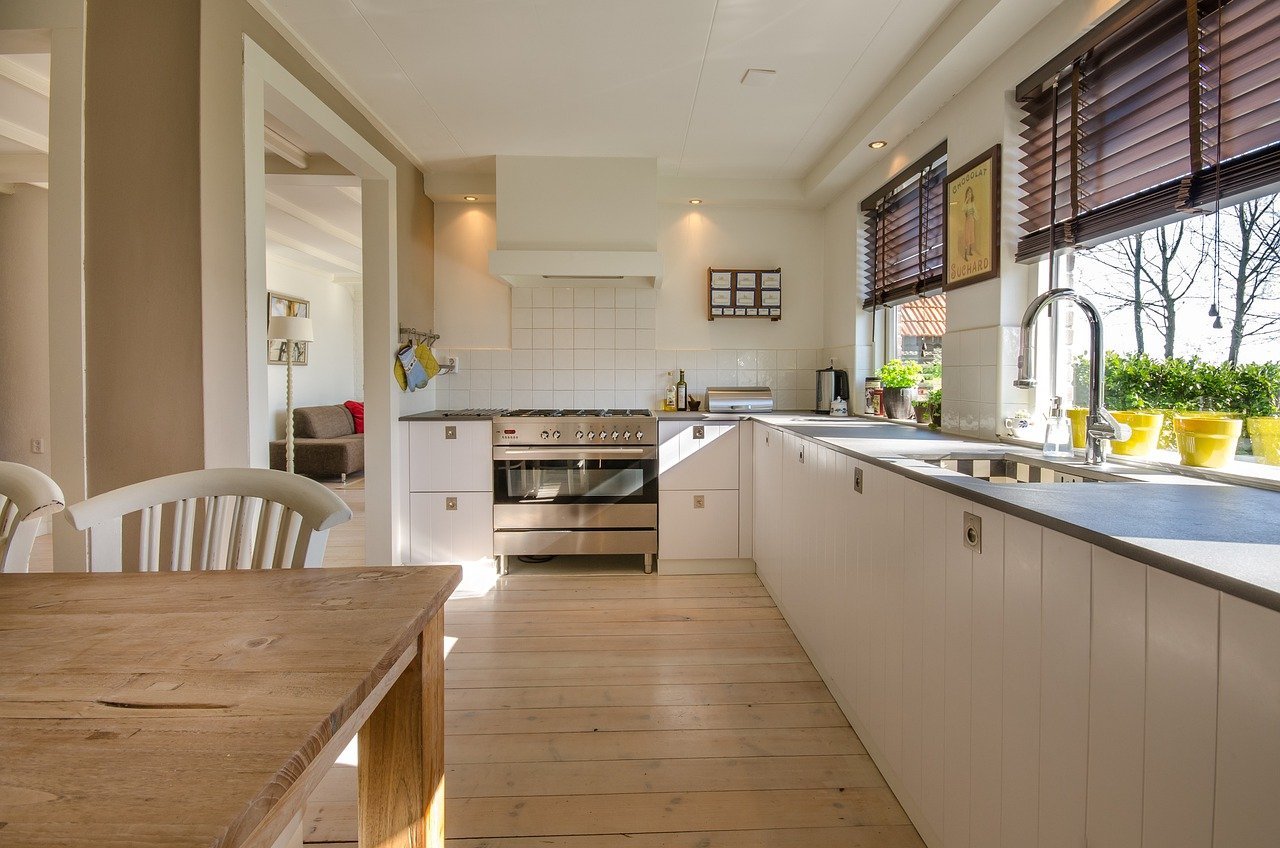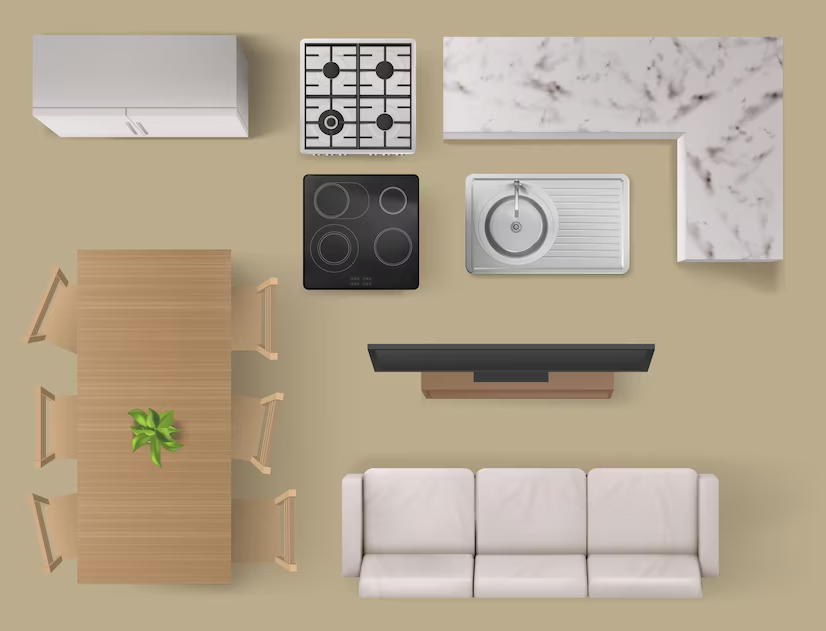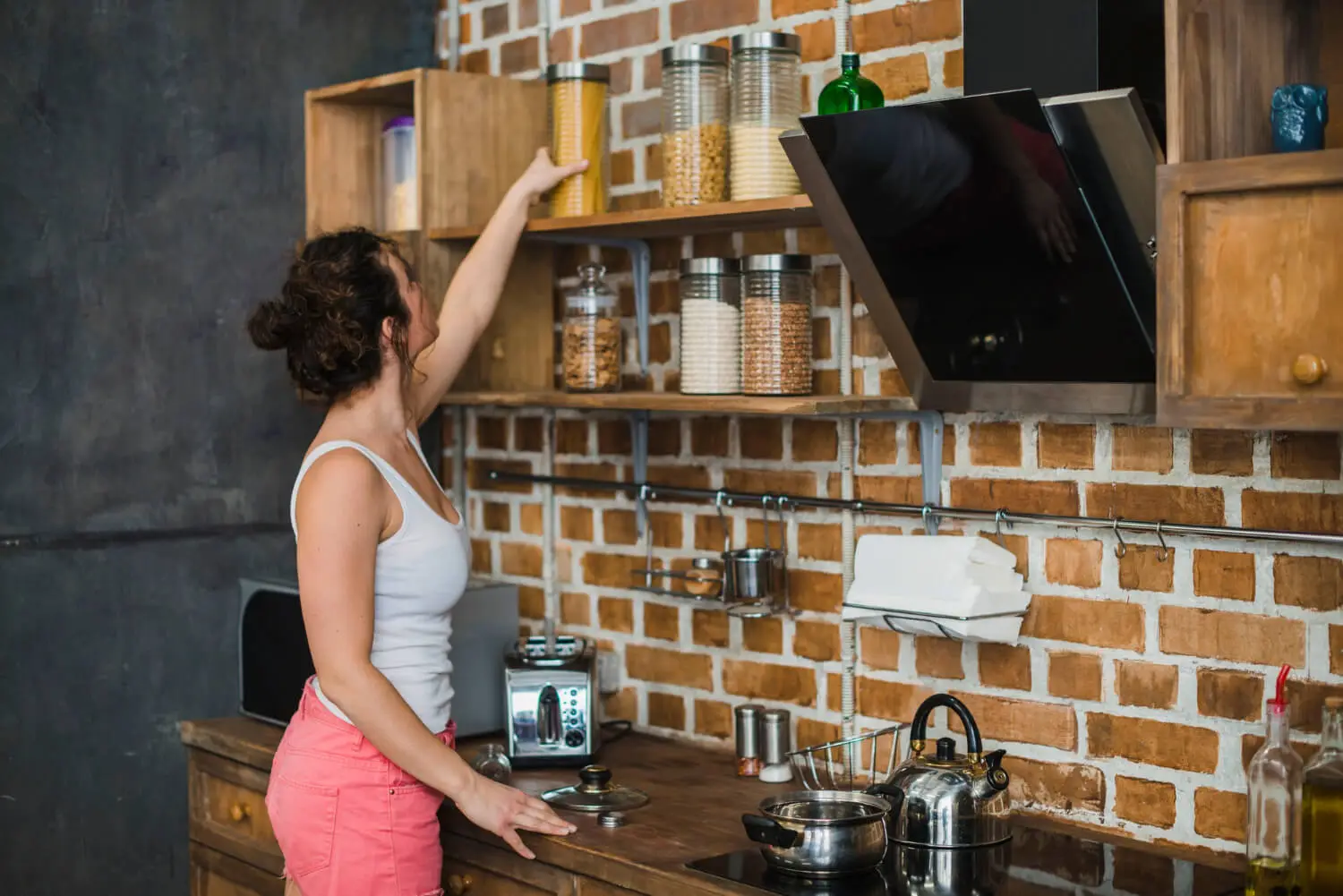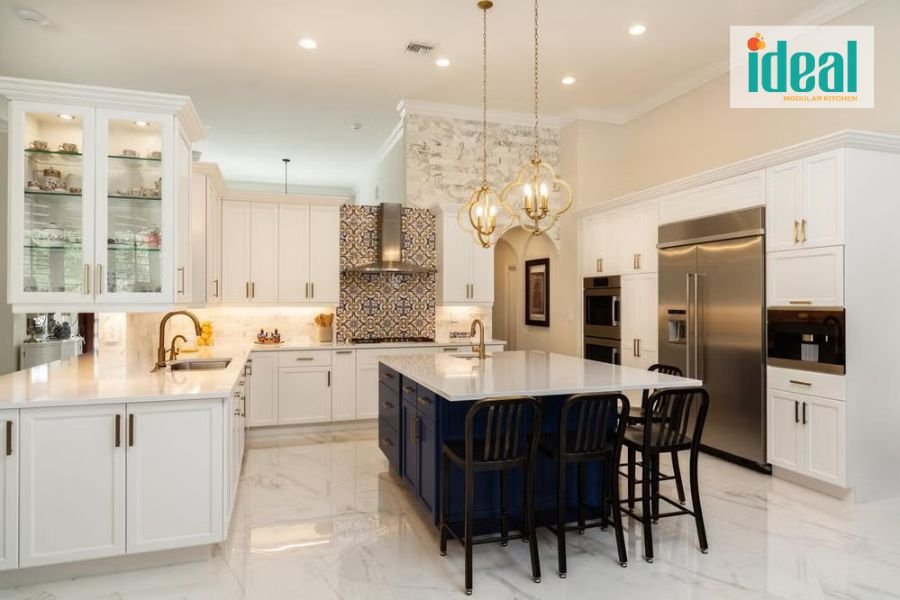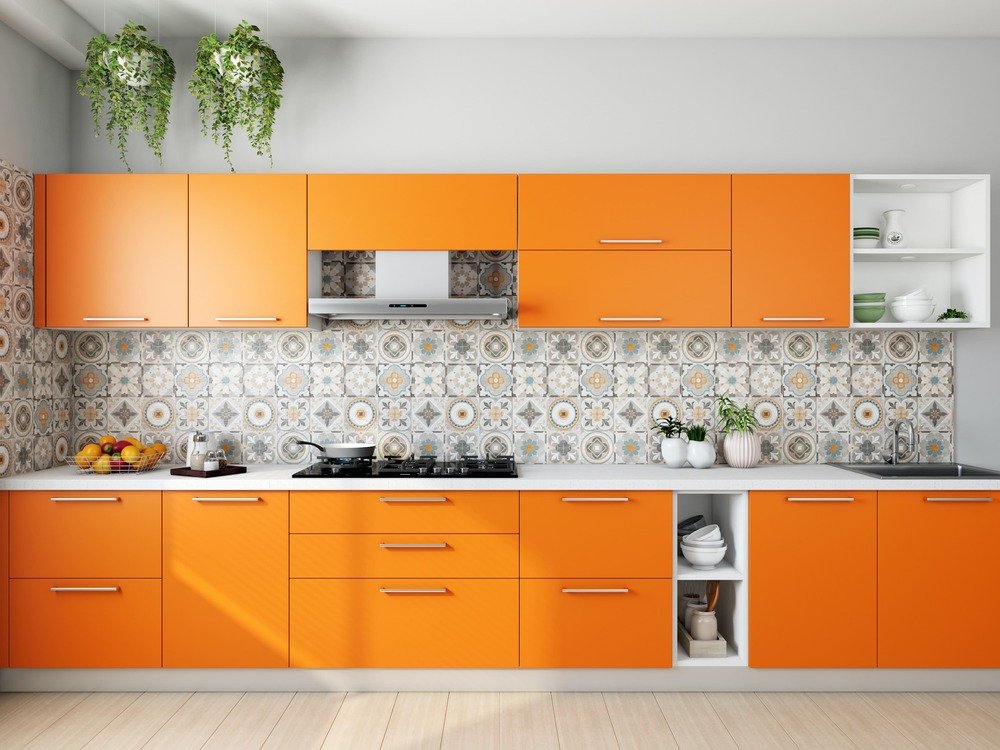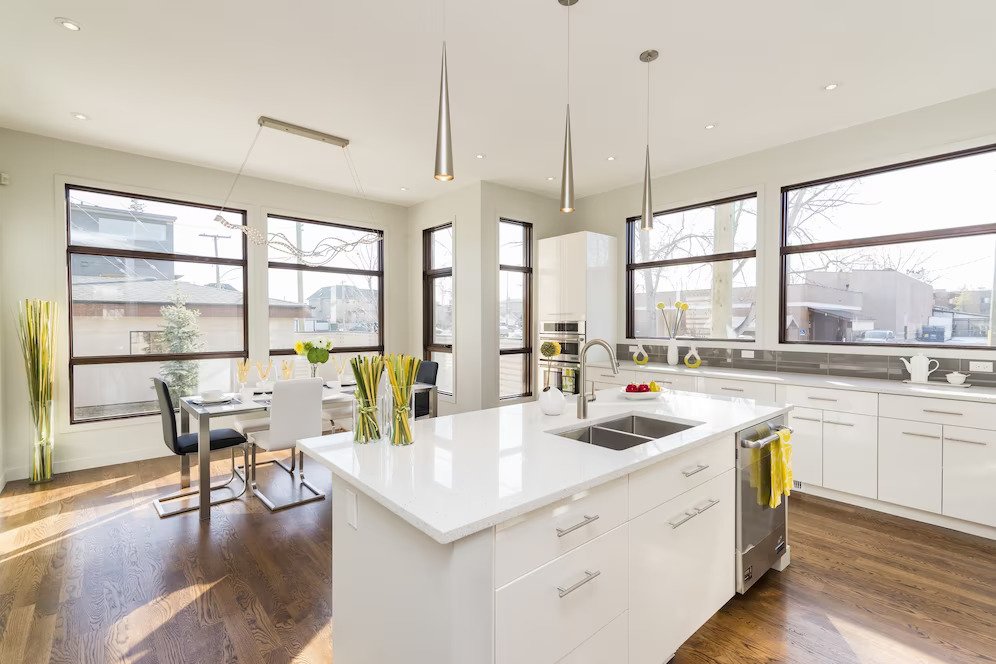Is your kitchen the heart of your home, or has it become more of a headache? A kitchen should be a place where you enjoy cooking and gathering, but over time, it can become outdated, inefficient, and frankly, a bit of a drag. If your kitchen is more "blah" than "brilliant," it might be time for a renovation. Here are five telltale signs it's time for a kitchen makeover, plus some helpful dos and don'ts to guide you through the process.
1. Your Kitchen is Stuck in the Past:
Does your kitchen feel like it belongs in a time capsule? While vintage charm can be appealing, cracked tiles, insufficient electrical outlets, and plumbing that struggles with modern appliances are red flags. An outdated kitchen isn't just about aesthetics; it can make daily tasks a real chore and even pose safety hazards. Think about outdated wiring struggling to power your appliances or insufficient lighting making food prep difficult.
● Do: Embrace a blend of modern design and practicality. Think about features like soft-close cabinets, sleek finishes, a smart layout, and energy-efficient appliances to bring your kitchen into the 21st century.
● Don't: Get carried away with just making things look pretty. A successful renovation addresses practical needs too, like updating the electrical system and plumbing, especially if you're adding new appliances. Consider the long-term cost savings of energy-efficient upgrades.
2. You're Constantly Fighting for Space:
A cramped kitchen is a common complaint. Not enough counter space, limited storage, and a cramped cooking area can make even simple meals feel stressful. If you're always bumping into people, struggling to find a spot for your gadgets, or wishing for more room to work, it's time for a change. Imagine trying to bake cookies with limited counter space and no room for your mixing bowls!
● Do: Work with a skilled designer to maximize every square inch. This might involve opening up walls, adding more counter space, or incorporating an island for extra storage and workspace. Consider vertical space too, taller cabinets and shelves can significantly increase storage.
● Don't: Just focus on what you need now. Think about the future! Will your family grow? Will your cooking habits change? Make sure your new design will still work for you down the line.
3. The Layout Just Doesn't Work:
An impractical kitchen layout can be a daily source of frustration. Whether it's cabinets that are too high, an island that's always in the way, or a poorly designed workflow, a bad layout can make cooking a real hassle. A well-planned renovation can make a world of difference, turning your kitchen from a source of stress to a source of joy.
● Do: Tailor the design to your specific needs. Are you short? Make sure cabinets are within reach. Do you need lots of counter space? Ensure your island (if you have one) is the right height and size. Consider how you move through your kitchen when cooking and design the layout to optimize that flow.
● Don't: Forget about safety and efficiency. Consider the classic "kitchen work triangle" – the ideal distance between your stove, sink, and refrigerator – to ensure a smooth cooking flow. Avoid creating bottlenecks or tight spaces that could be hazardous.
4. It Feels Dark and Dreary:
Good lighting is crucial in a kitchen, not just for cooking but also for creating a welcoming atmosphere. If your kitchen feels dark and gloomy, you're less likely to enjoy spending time there. Poor lighting can even make the space feel smaller than it is. Imagine trying to chop vegetables in a dimly lit space – not only is it difficult, but it's also dangerous.
● Do: Brighten things up with a combination of natural and artificial light. Skylights, large windows, and strategically placed light fixtures can transform the entire feel of the room. Light colors and reflective surfaces can also contribute to a more open and airy vibe. Don't forget task lighting for specific areas like the stovetop and countertops.
● Don't: Overlook under-cabinet lighting. It's a small detail that makes meal prep easier and adds a warm, inviting glow to the space. Consider dimmer switches for your lighting to create different moods.
5. You're Thinking About Selling:
If you're planning to put your home on the market, your kitchen can be a major selling point – or a major drawback. An outdated or poorly designed kitchen is one of the first things potential buyers notice, and it can significantly impact their perception of your home and its value.
● Do: Opt for neutral, timeless designs that will appeal to a broad range of buyers. Clean lines and classic colors are always a safe bet. Focus on functionality and durability.
● Don't: Go overboard with personal touches or spend excessively. Stick to a budget that aligns with your expected return on investment, and avoid overly specific design choices that might not resonate with potential buyers.
Key Do's and Don'ts for a Smooth Modular Kitchen Renovation:
Once you've decided to renovate, careful planning is essential. Here are some key dos and don'ts to help you navigate the process:
● Do: Think ahead about how you'll use the new space. Communicate your cooking habits and lifestyle to your kitchen designer so they can create a layout that truly works for you. For example, if you frequently cook large meals, make sure you have ample counter space and storage for all your equipment.
● Do: Maximize storage. Explore creative storage solutions like pull-out pantries, corner drawers, and under-sink organizers to keep things tidy and efficient. Extend cabinets to the ceiling to utilize every inch of space.
● Do: Hire experienced professionals. A successful kitchen renovation relies on the expertise of skilled kitchen designers and installers. They can bring your vision to life and ensure quality craftsmanship.
● Don't: Overspend. Set a realistic budget at the outset and stick to it. Allocate funds to all aspects of the project, from cabinetry and appliances to flooring and lighting, and be sure to include a buffer for unexpected costs.
● Don't: Just rely on standard cabinets. Explore innovative storage solutions like pull-out drawers, corner units, and specialized organizers to maximize efficiency and minimize clutter.
Conclusion
A modular kitchen renovation is a significant investment, but it's one that can significantly enhance your quality of life and increase your home's value. By recognizing the signs that it's time for a change and following these dos and don'ts, you can create the kitchen of your dreams, a space that's not only beautiful but also perfectly suited to your needs. Consider visiting an Ideal Modular Kitchen showroom to see examples of different styles and materials.
FAQs
1. How much does a kitchen renovation typically cost?
The cost of a kitchen renovation can vary significantly depending on the size of your kitchen, the materials you choose, and the complexity of the project. It's best to get quotes from several contractors to get a realistic idea of the cost.
2. How long does a kitchen renovation usually take?
A typical kitchen renovation can take anywhere from a few weeks to several months, depending on the scope of the project. Your contractor should be able to give you a timeline estimate.
3. What are some popular kitchen design trends?
Current trends include minimalist designs, open shelving, smart appliances, and the use of natural materials. However, it's important to choose a design that suits your personal style and needs, rather than just following trends.
4. How can I make my kitchen more eco-friendly?
You can make your kitchen more eco-friendly by choosing energy-efficient appliances, using sustainable materials, and reducing waste. Consider LED lighting, water-saving faucets, and recycled countertops.


